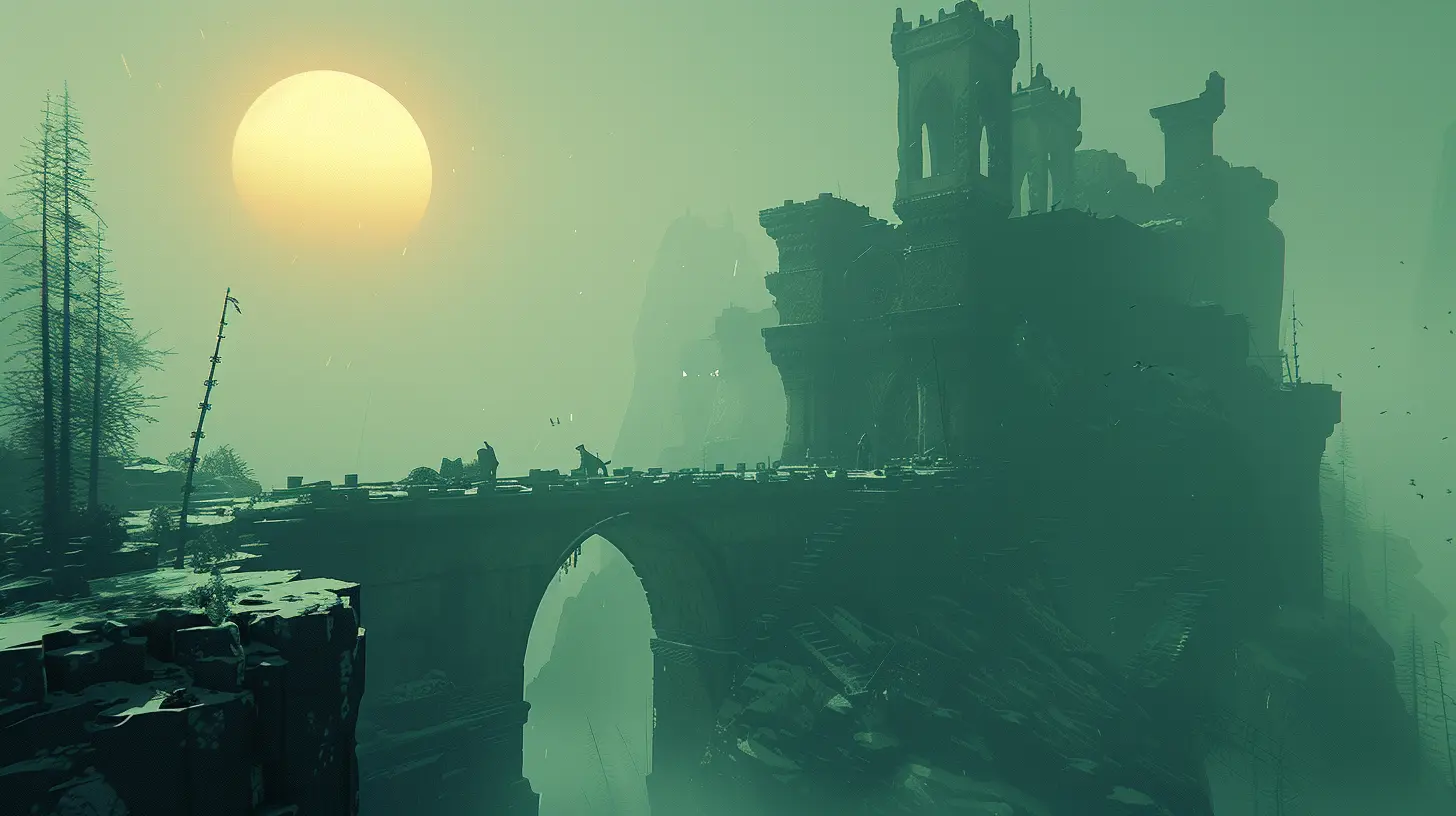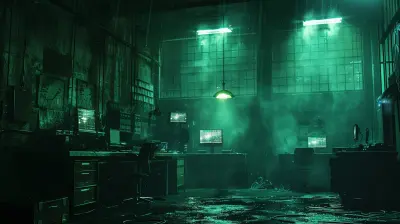Procedural Storytelling: Letting Algorithms Shape Your Adventure
6 June 2025
Have you ever played a game where every time you boot it up, the world feels completely new? Maybe an unexpected twist in the plot caught you off guard, or a character showed up that you’ve never seen before—despite playing the game several times. That’s not magic (well, maybe tech magic). It’s called procedural storytelling, and it’s changing the way we experience games.
Whether you're a casual gamer or a dev knee-deep in code, you’ve probably heard the buzz. Procedural storytelling is getting a lot of attention—and for a good reason. It’s ambitious, unpredictable, and kind of brilliant. But what exactly is it? How does it work? And more importantly, is it actually making games better?
Let’s dive right in.
What Is Procedural Storytelling?
Let’s keep things simple.At its core, procedural storytelling is a method where a game generates story elements using algorithms rather than handcrafted scripts. This doesn’t mean the entire story is random chaos—far from it. Instead, the game uses a set of rules and inputs to weave narratives dynamically.
Imagine a digital dungeon master who adapts the story on the fly, depending on your choices, actions, or even sheer chance. That’s procedural storytelling in action—smart code spinning tales just for you.
How Is It Different From Traditional Storytelling?
In traditional game storytelling, writers and designers craft a fixed narrative path. Everyone goes through the same campaign—same plot points, same dialogue, same ending. Think The Last of Us, Red Dead Redemption 2, or God of War. Great games with tight stories, no doubt. But once you’ve played them, you’ve basically seen what they have to offer story-wise.With procedural storytelling, the game doesn’t just offer a repeat experience—it evolves. That sense of unpredictability creates replayability and freshness. No two journeys are exactly alike. You get a story shaped by your actions, surroundings, and sometimes even just random number generation.
The Building Blocks Behind Procedural Storytelling
Alright, but how does it all work under the hood?It’s not just a matter of rolling digital dice. Developers use a combination of the following:
1. Procedural Generation
This is the big one. It’s like a recipe for random content. Think worlds, dungeons, characters, and dialogue—all created on-the-fly using algorithms.Games like Minecraft or No Man’s Sky are textbook examples in terms of world-gen. But when procedural generation extends to narrative elements? That’s where the storytelling magic happens.
2. Storylets
Storylets (also called narrative atoms) are tiny modular bits of story that can be strung together however the game sees fit. Each storylet is context-aware—it knows when it makes sense to appear.Let’s say your character just lost a companion. A storylet for grief or revenge might activate. Later, you find clues about your companion’s mysterious past. A different storylet takes over. And suddenly, you’re uncovering secrets you didn’t even know were there.
Games like Fallen London and Sunless Sea use this method beautifully.
3. Player Behavior Tracking
Some games adapt based on how you play. Are you aggressive? Sneaky? Do you steal from NPCs? Procedural systems pick up on that and change the story accordingly.It’s kind of like a storyteller watching you from the shadows—taking notes, shifting the narrative behind the curtain. Creepy, but cool.
4. AI and Machine Learning
Now we’re entering sci-fi territory. With advancements in AI, some games are experimenting with systems that actually learn from player decisions, adjusting not only story structure but character behavior and world events.We’re not quite at the Westworld level yet, but we’re inching closer.
Why Procedural Storytelling Feels So Magical (When It Works)
There’s something deeply personal about a story that’s been shaped around you. When you know that no one else has experienced the exact same twist, betrayal, or unlikely friendship—you feel like the protagonist in a movie written just for you.Some of the key benefits?
- ✅ Replayability – Every run is different, keeping the game from going stale.
- ✅ Player Agency – Your choices matter in a real, tangible way.
- ✅ Surprise Factor – Unexpected moments feel authentic, not scripted.
- ✅ Scalability – Developers can create massive content without writing out every single scenario by hand.
Great Examples of Procedural Storytelling in Games
Let’s talk about some games that are doing it right. If you're curious where to experience procedural storytelling firsthand, check these out:1. Dwarf Fortress
This game is infamous for its complexity, but its storytelling chops are underrated. Entire civilizations rise and fall based on player interaction and algorithmic narrative systems. Every dwarf has a backstory, preferences, and relationships dictated by procedural logic. The result? Truly emergent narrative.2. RimWorld
This colony sim isn’t just about survival—it’s about the stories that emerge because of survival. The game’s storyteller AI (like “Randy Random”) creates situations that are equal parts brutal and hilarious, leading to watercooler-worthy anecdotes.3. Wildermyth
Perhaps one of the best examples of procedural storytelling done right. Characters grow, form bonds, and age over time. Their appearances and personalities subtly change as they make choices—and those choices feel deeply personal. It’s like a tabletop RPG generated on demand.4. Skyrim (with Mods)
While not procedural at its core, modded Skyrim can be enhanced so much that it starts feeling like a brand-new story every time. Mods like Radiant Questing and alternate start frameworks introduce surprise elements that mimic procedural design.Challenges of Procedural Storytelling
Okay, it’s not all sunshine and randomly-generated rainbows. Procedural storytelling has its pitfalls.1. Narrative Coherence
One of the biggest hurdles is making sure the story feels consistent. Random doesn’t always mean good. If story elements don’t flow together smoothly, the result can feel disjointed or even nonsensical.Picture getting a heartfelt confession mid-battle, or a villain monologuing when you haven’t even met them yet. That’s a big no-no.
2. Emotional Impact
Procedural systems can struggle to hit those poignant, memorable moments that crafted stories shine at. A game like The Witcher 3 delivers emotional gut-punches—those are hard to replicate with algorithms.3. Player Fatigue
Sometimes, too much procedural content can feel like busywork. Without a strong anchor or meaningful progression, players might get bored even if the story is technically "new."So… Is Procedural Storytelling the Future?
Here’s the million-dollar question.Will procedural storytelling replace traditional narratives? Probably not.
But will it continue to grow and evolve alongside them? Absolutely.
Procedural storytelling isn’t here to replace scriptwriters and narrative designers. It’s here to offer a new toolkit. It empowers devs to build worlds that live and breathe. Stories that change because you change. And games that never tell the same tale twice.
Think of it like jazz instead of classical music. One is composed, the other improvised. Both are valid, both can be beautiful—they just hit the ear differently.
Final Thoughts: Charting Your Own Path
Games have always been about agency. Procedural storytelling is just the next logical step in making you feel even more like the hero of your own tale.Sure, it’s not perfect. But when it clicks? When the stars align and the game throws you a narrative curveball you never saw coming? That’s storytelling gold.
And who knows—maybe your next unforgettable gaming moment won’t be written by a human at all... but by an algorithm quietly spinning its digital yarn.
all images in this post were generated using AI tools
Category:
Interactive StorytellingAuthor:

Stephanie Abbott
Discussion
rate this article
3 comments
Fleur McLaury
Procedural storytelling offers exciting potential, but it often sacrifices depth for randomness. Balancing algorithmic creativity with meaningful narratives is crucial for truly immersive gaming experiences. Looking forward to future innovations!
June 23, 2025 at 3:34 AM

Stephanie Abbott
Thank you for your insightful comment! Balancing randomness with depth is indeed key to enhancing player immersion, and I agree there's great potential for future innovations in this space.
Olivia Mendez
Procedural storytelling holds immense potential, blending creativity with technology. By allowing algorithms to shape narratives, we can experience unique adventures that adapt to our choices. However, it’s essential to balance randomness with meaningful storytelling to ensure these experiences resonate emotionally with players and foster deeper connections.
June 9, 2025 at 3:24 PM

Stephanie Abbott
Thank you for your insightful comment! I completely agree that balancing randomness with meaningful storytelling is crucial for creating emotionally resonant experiences in procedural storytelling.
Devin Frank
What a fascinating exploration of procedural storytelling! The idea of algorithms creating unique adventures is thrilling! Can’t wait to see how this transforms our gaming experiences! 🎮✨
June 6, 2025 at 5:00 PM

Stephanie Abbott
Thank you! I’m glad you’re excited about the potential of procedural storytelling—it's an innovative frontier for gaming! 🎮✨



